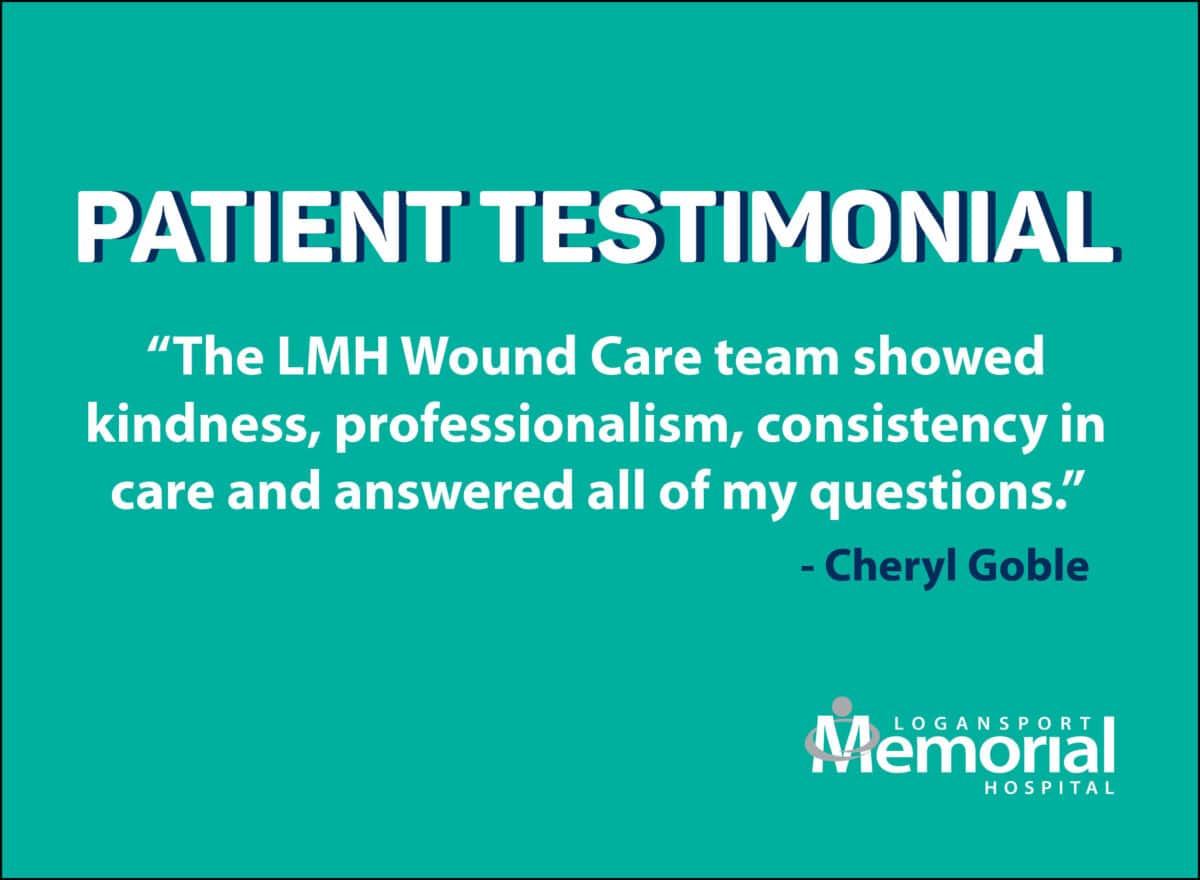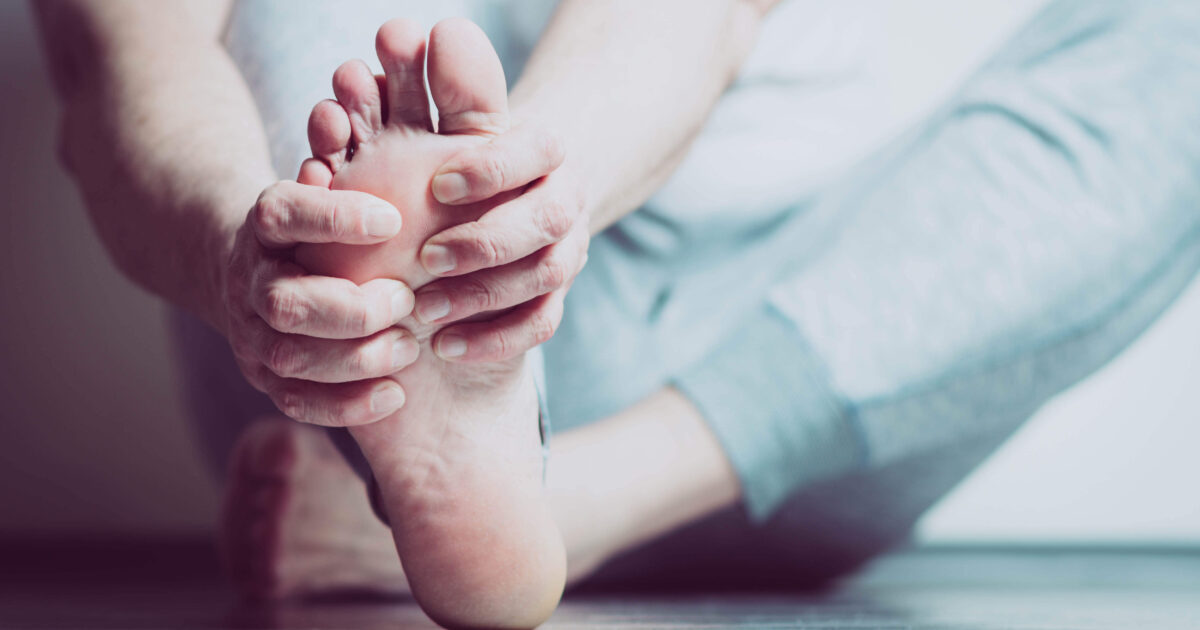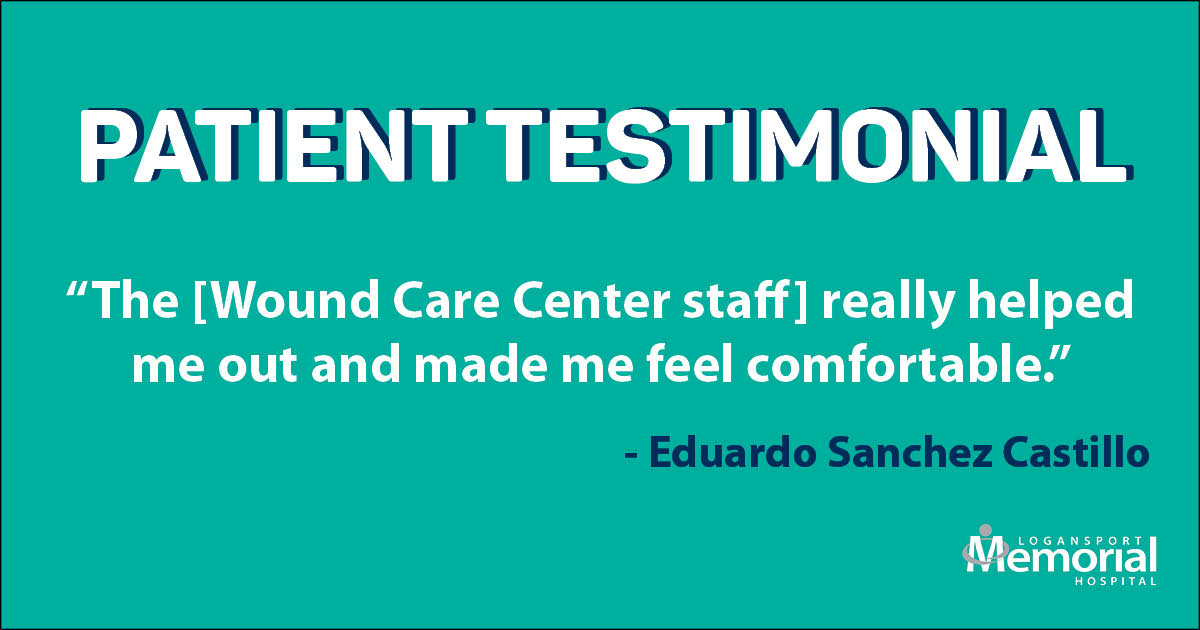This article is part of the Complete Guide to Wound Care.
The origin of the aphorism “time heals all wounds” is nearly 100 years-old and while its true source remains disputed, its sentiment- as some patients know all too well- about all wounds healing with just time isn’t always true.
Sometimes sores and wounds don’t improve over time with conventional treatments, and this can affect your quality of life and, in the worst cases, lead to more debilitating health problems.

Will the wound on my leg heal faster if I let it breathe at night? Would putting Vaseline on my scab make it heal faster? How do I know if my burn is infected? What can i do about my incision that isn’t healing after surgery?
We are here to answer all of these questions and more about the four phases of the restorative process. The Logansport Memorial Hospital Wound Care Center experts will help you go from no healing (or slow-healing) to recovery.
We provide specialized treatments and therapies for a variety of chronic and non-healing wounds, including diabetic ulcers, leg ulcers, bed sores, skin tears and lacerations, burn wounds, traumatic wounds, post-operation wounds and infections, and more. Our partner Healogics, Inc. is the nation’s largest provider of wound care services. They help run more than 700 centers and have treated over 300,000 patients.
Learn more about the benefits of dedicated wound care.
The four phases of healing
But, how do you know if you wound isn’t healing properly?
Even when you follow your doctor’s guidelines and take all of the right steps to help your wound heal, some factors beyond your control may cause an infection to develop. Here’s a simplified breakdown of the four overlapping phases that take place during healing and what you should expect to happen during the process.
Phase one: Blood clotting
The first phase of healing starts immediately. Your body works to stop the bleeding. The scientific name that doctors and nurses give to this process is hemostasis.
Phase two: Preparation
During the first few days, your body gets ready to begin the rebuilding process and it will work to stave off infection. Experts sometimes refer to this second part of the healing process as inflammation because you may experience swelling, pain, heat, and redness during this period.
Phase three: New tissue growth
During this stage which usually last over two weeks, your body begins to rebuild your wound with new, healthy tissue. Professionals often refer to this third period of healing as proliferation.
Phase four: Maturation
The final stage begins when the wound is completely closed up, and your body goes into remodeling mode, working to redevelop and enhance tensile strength. During this period it may appear that your wound is done healing, but it is important to keep up dedicated care.
If your wound healing process begins to slow or reverse itself, we can help.





